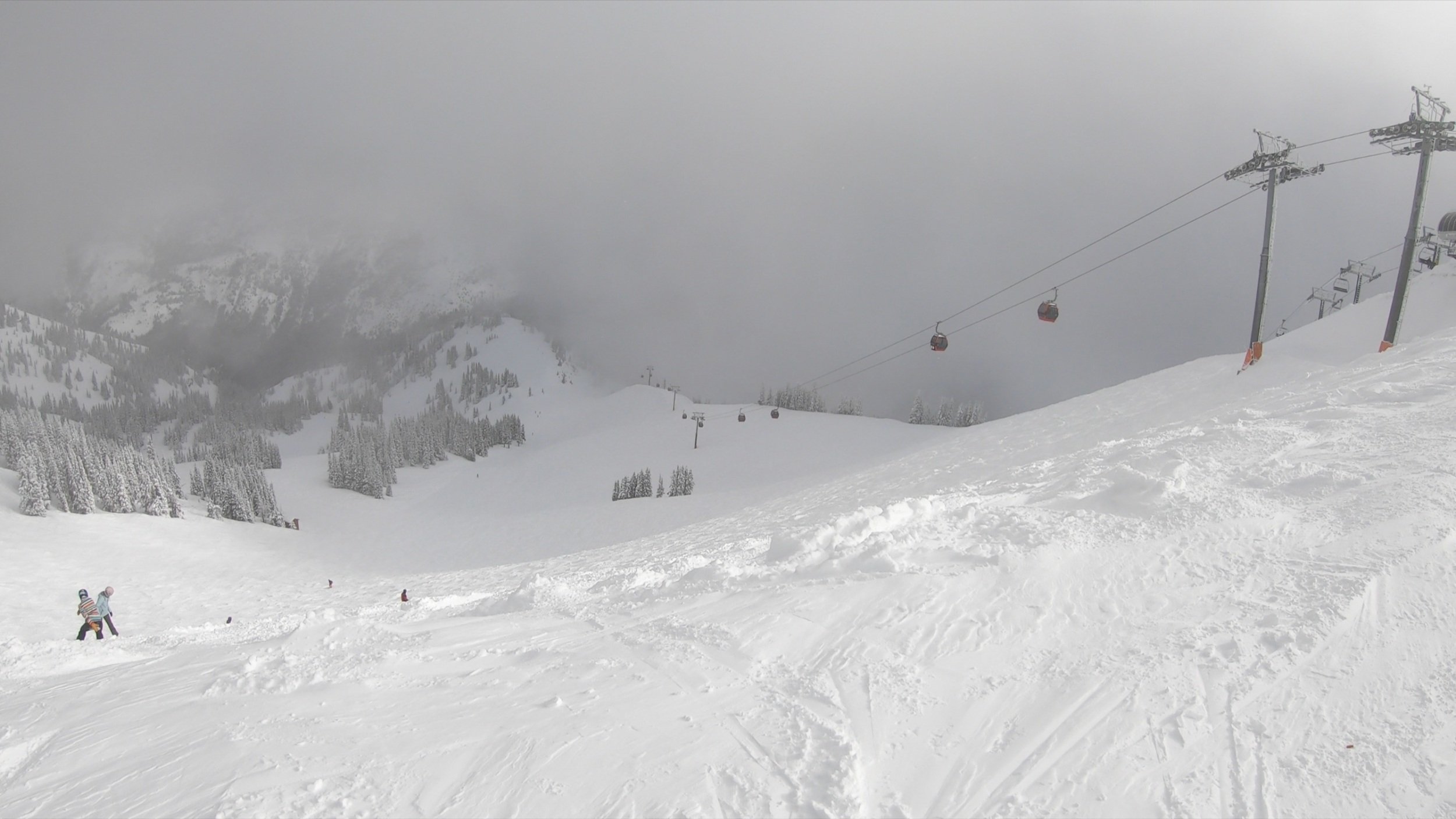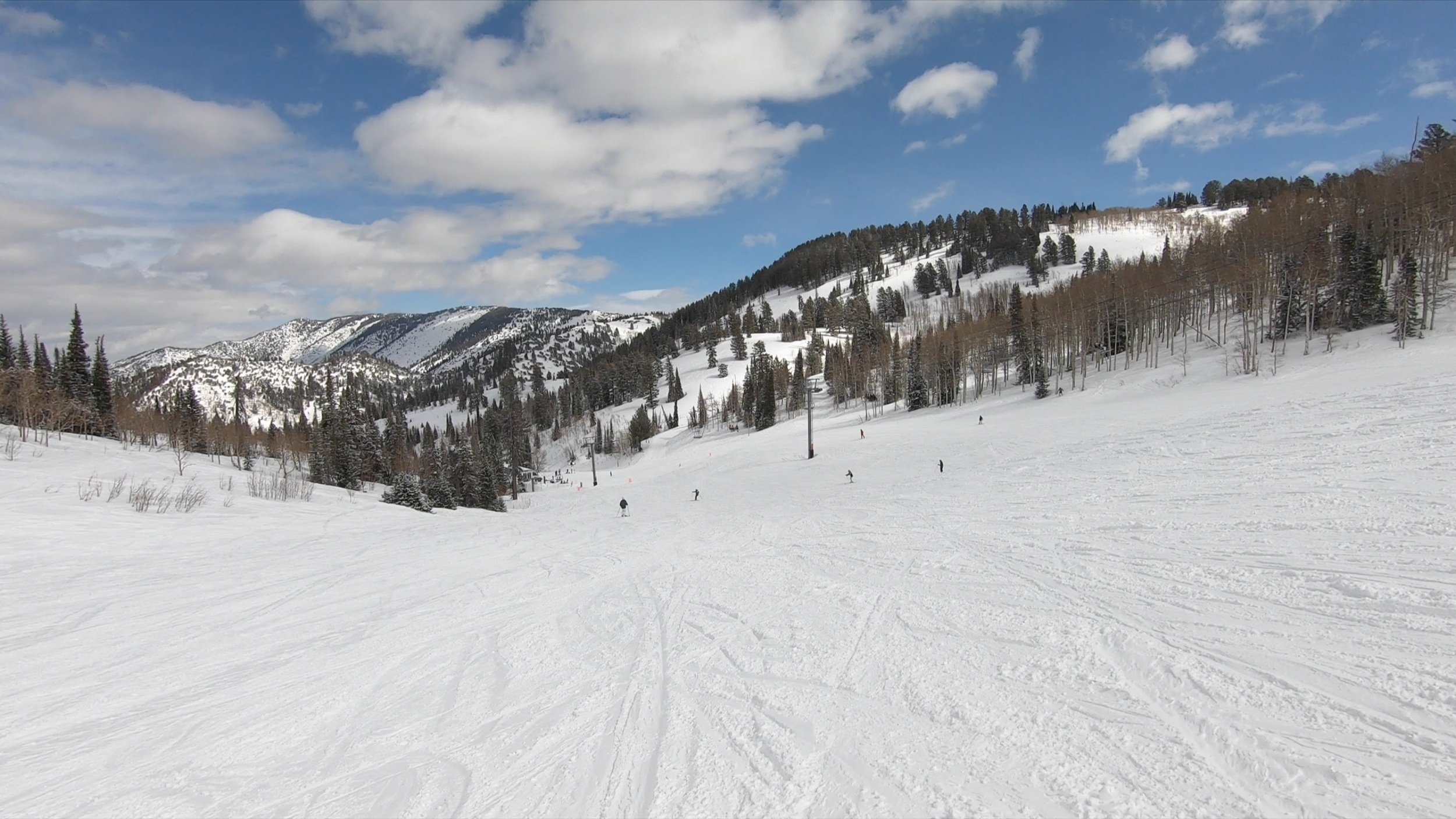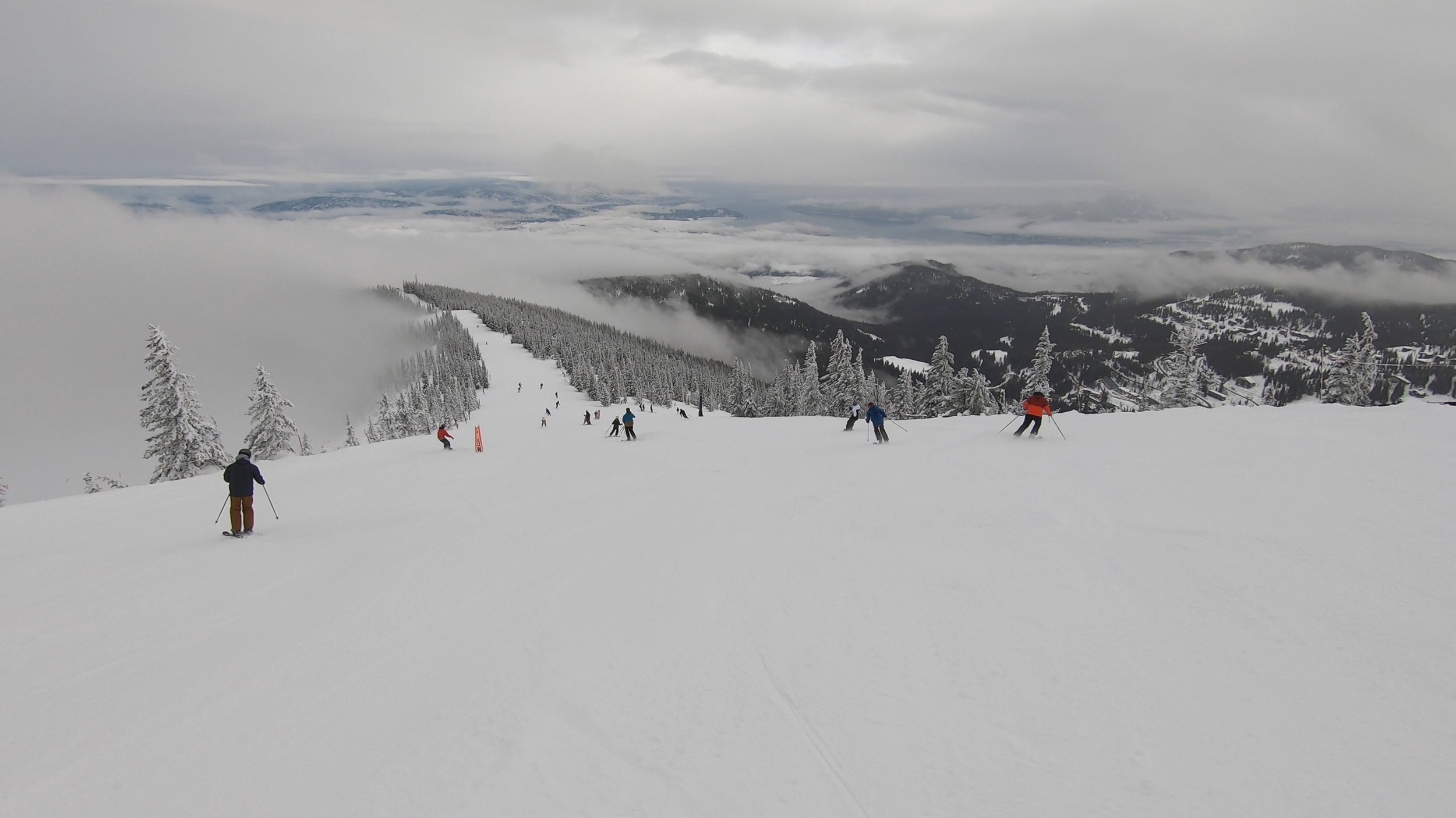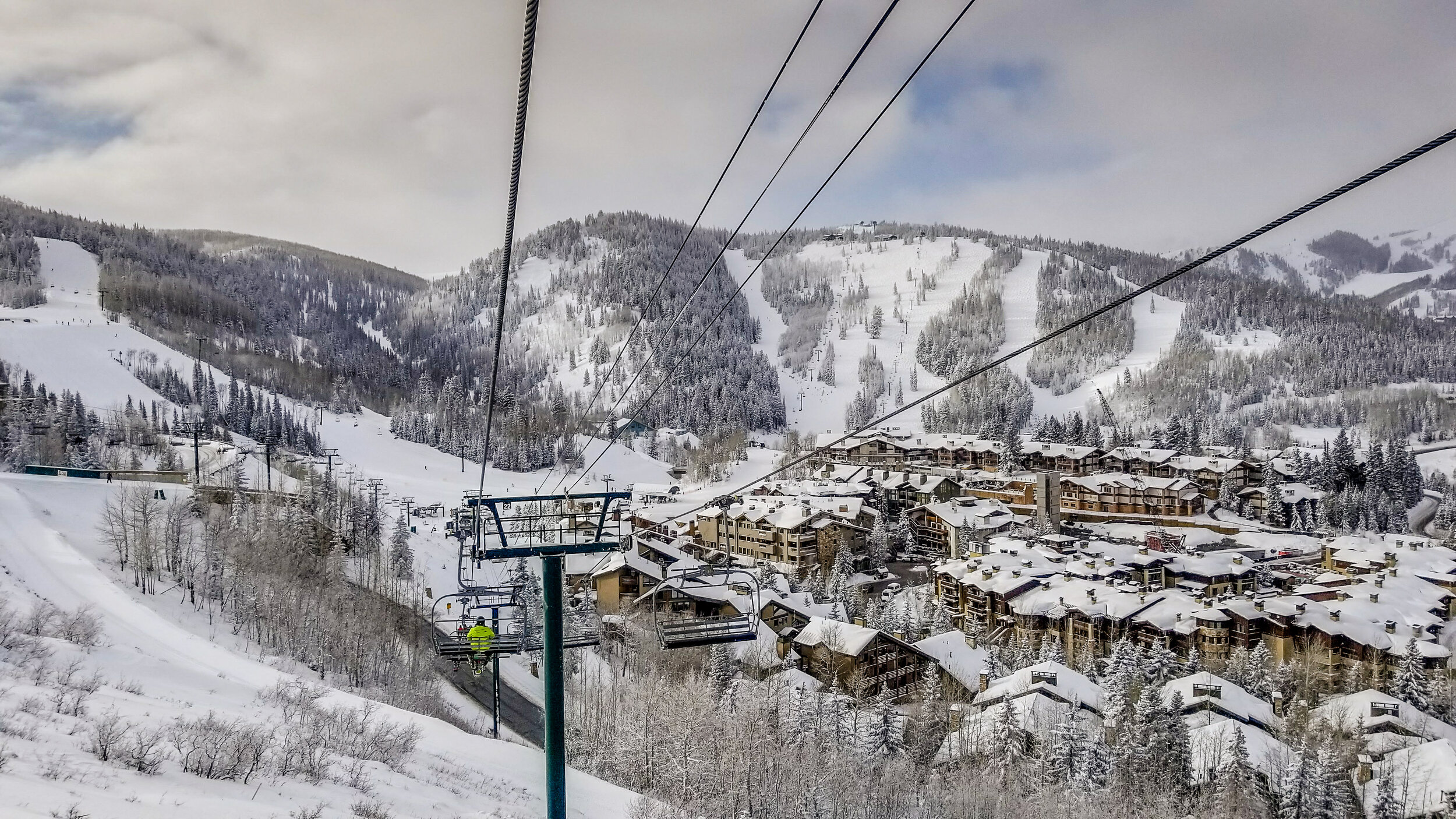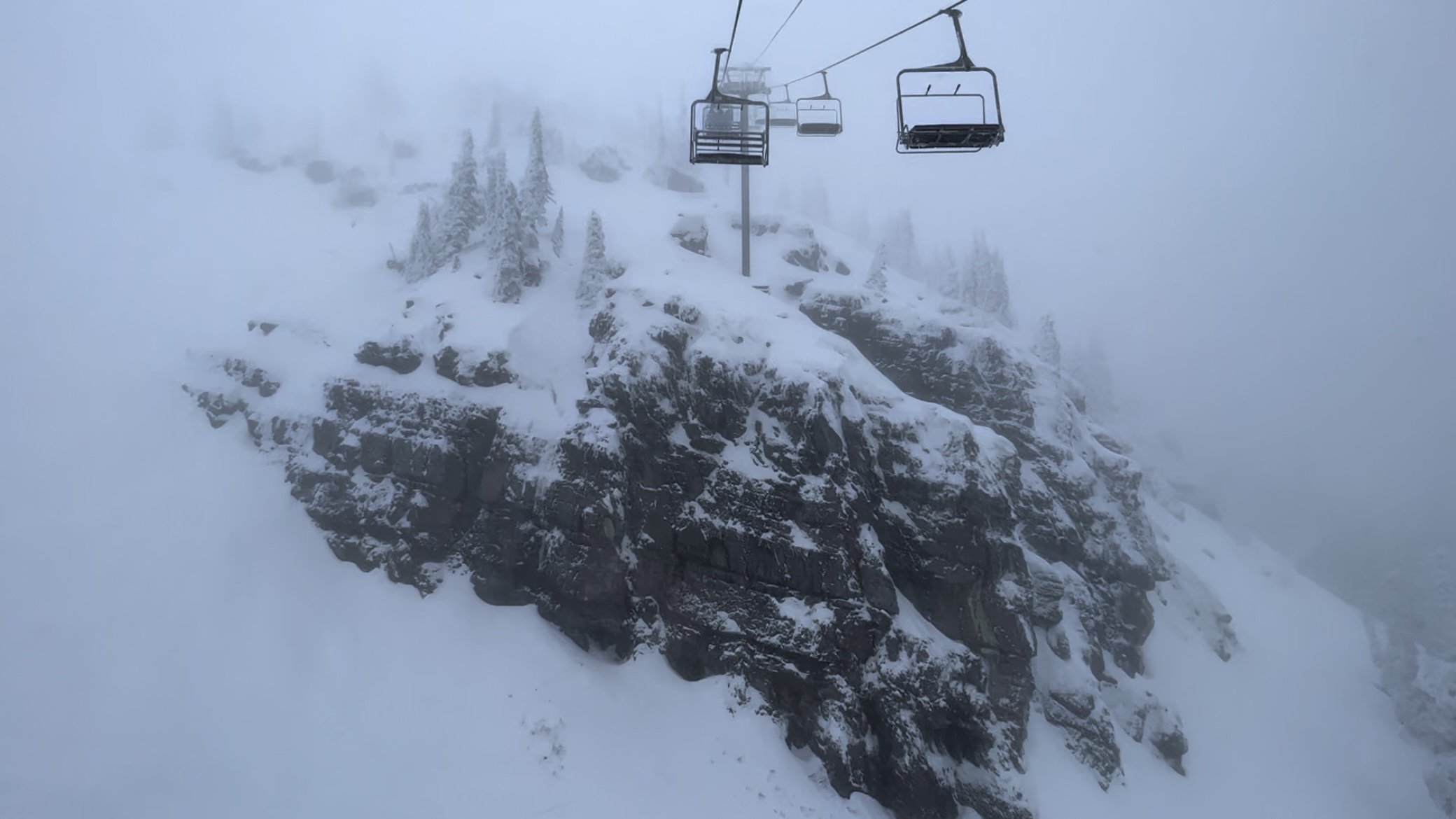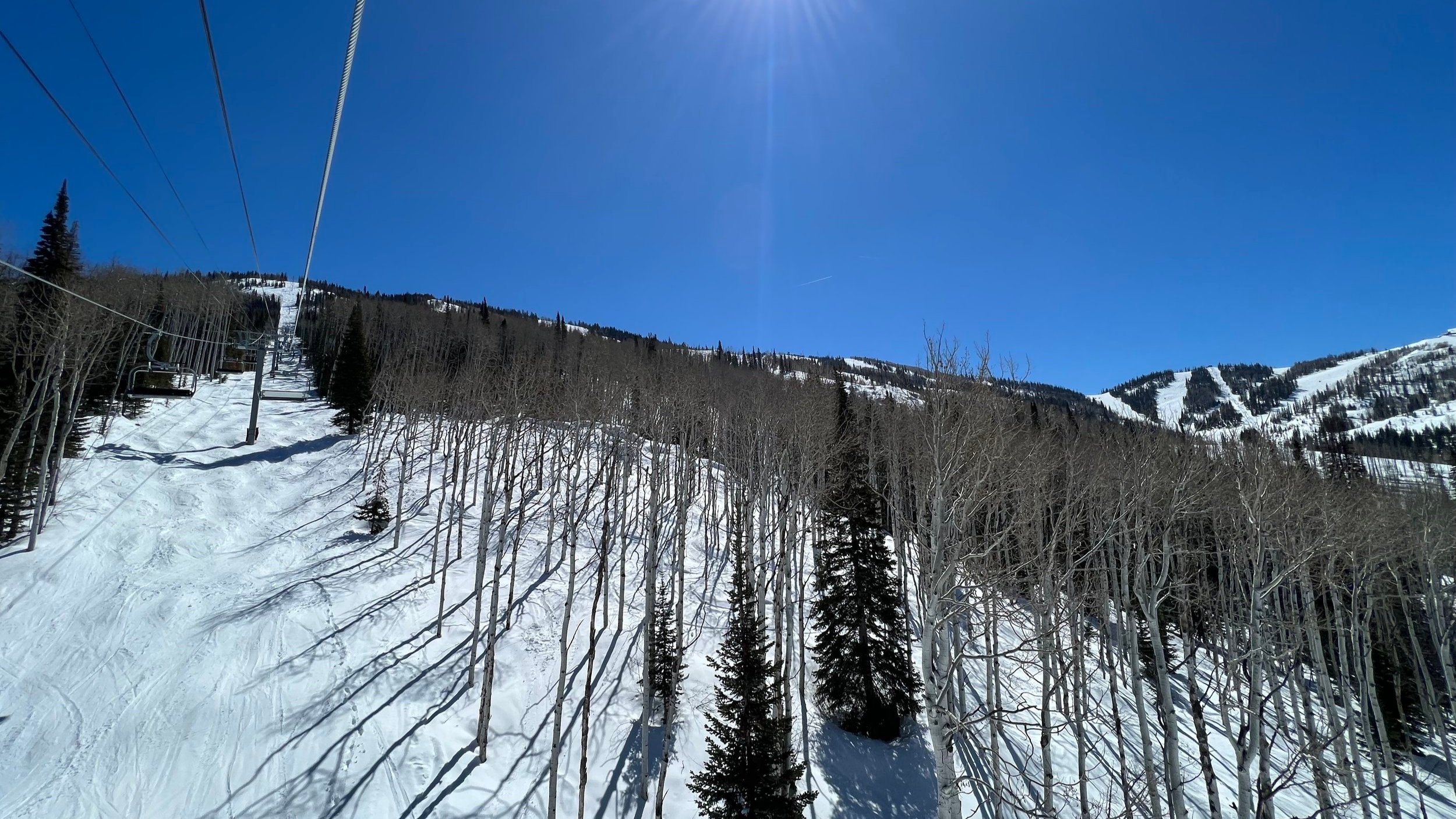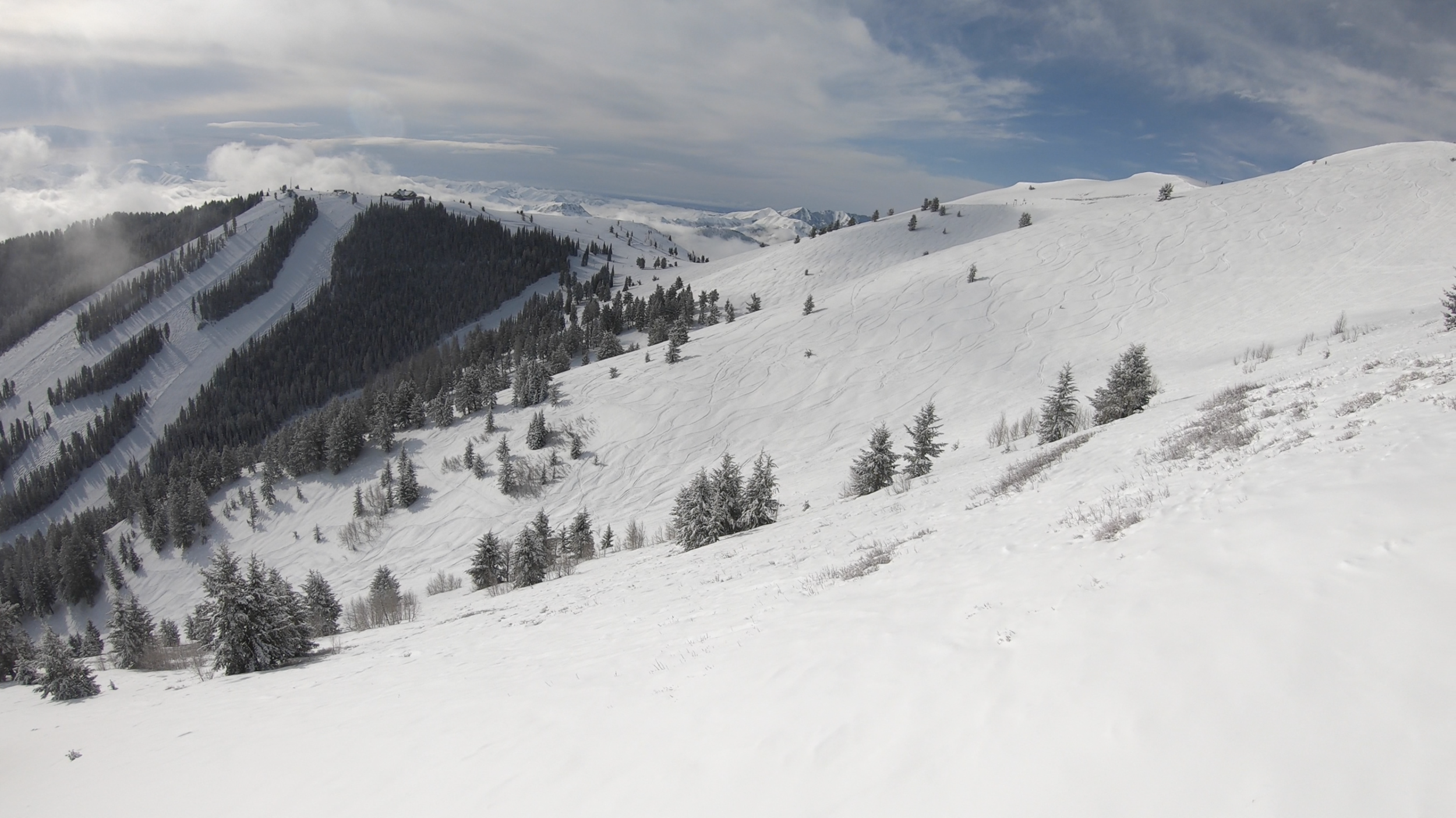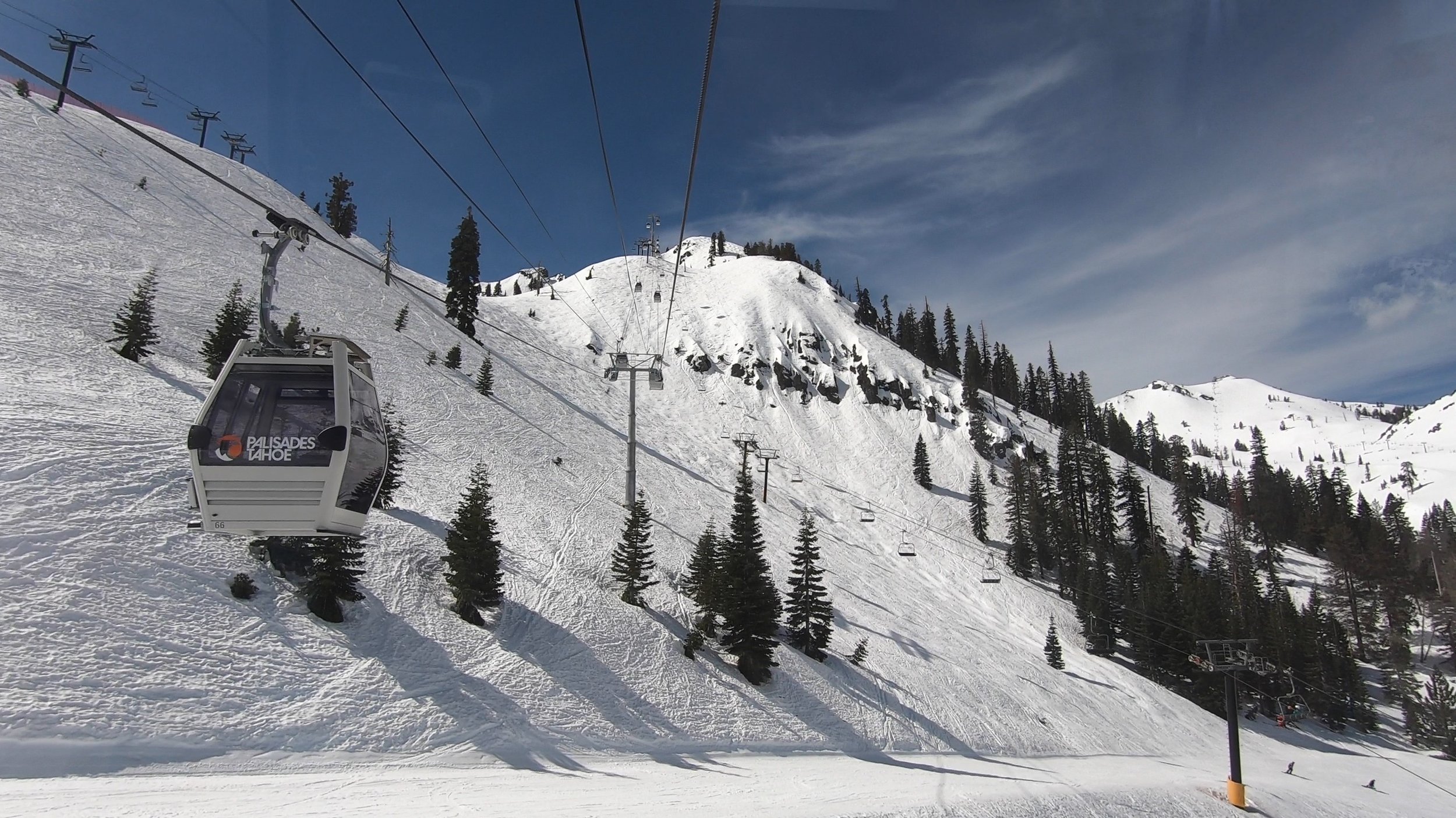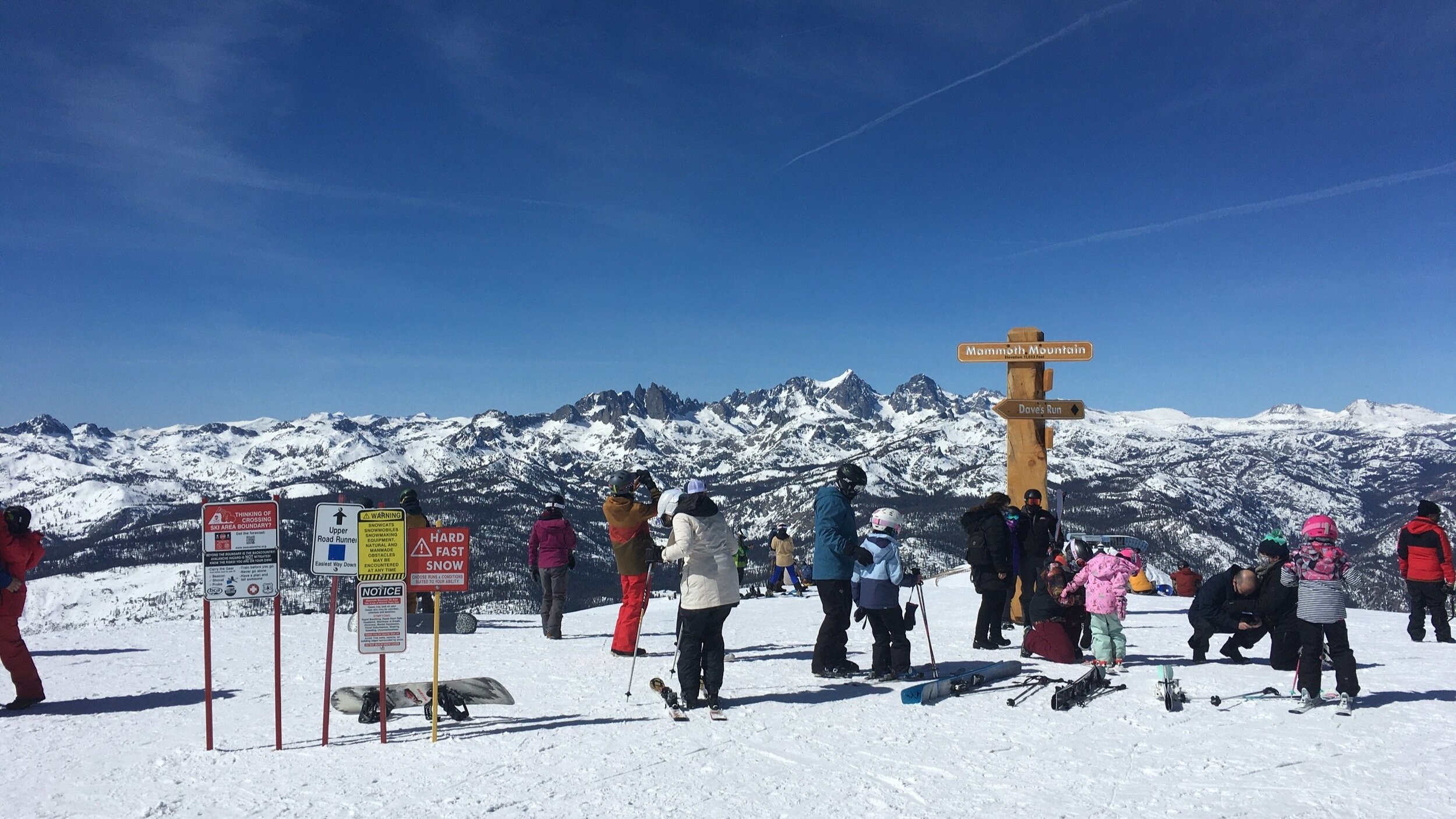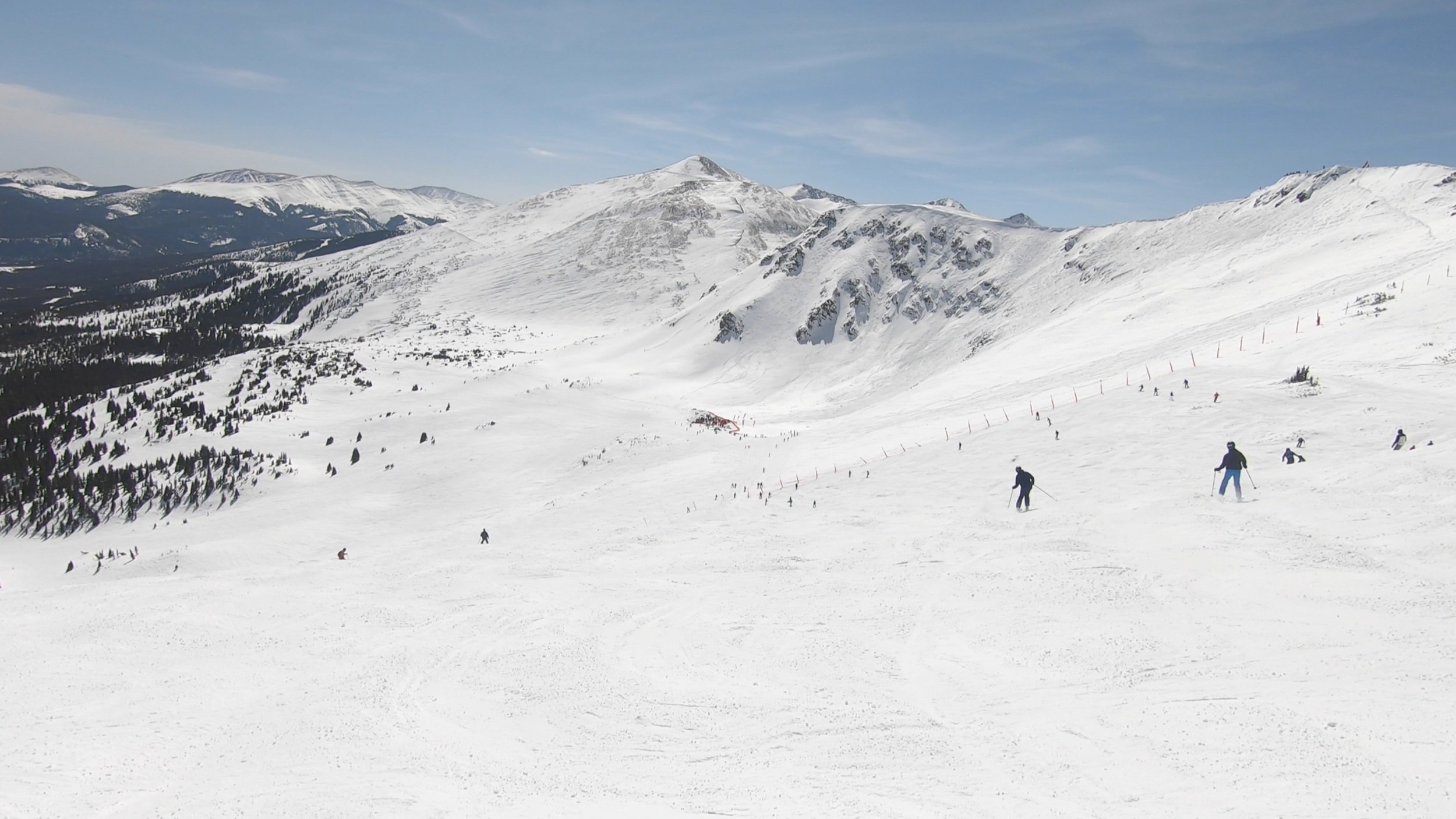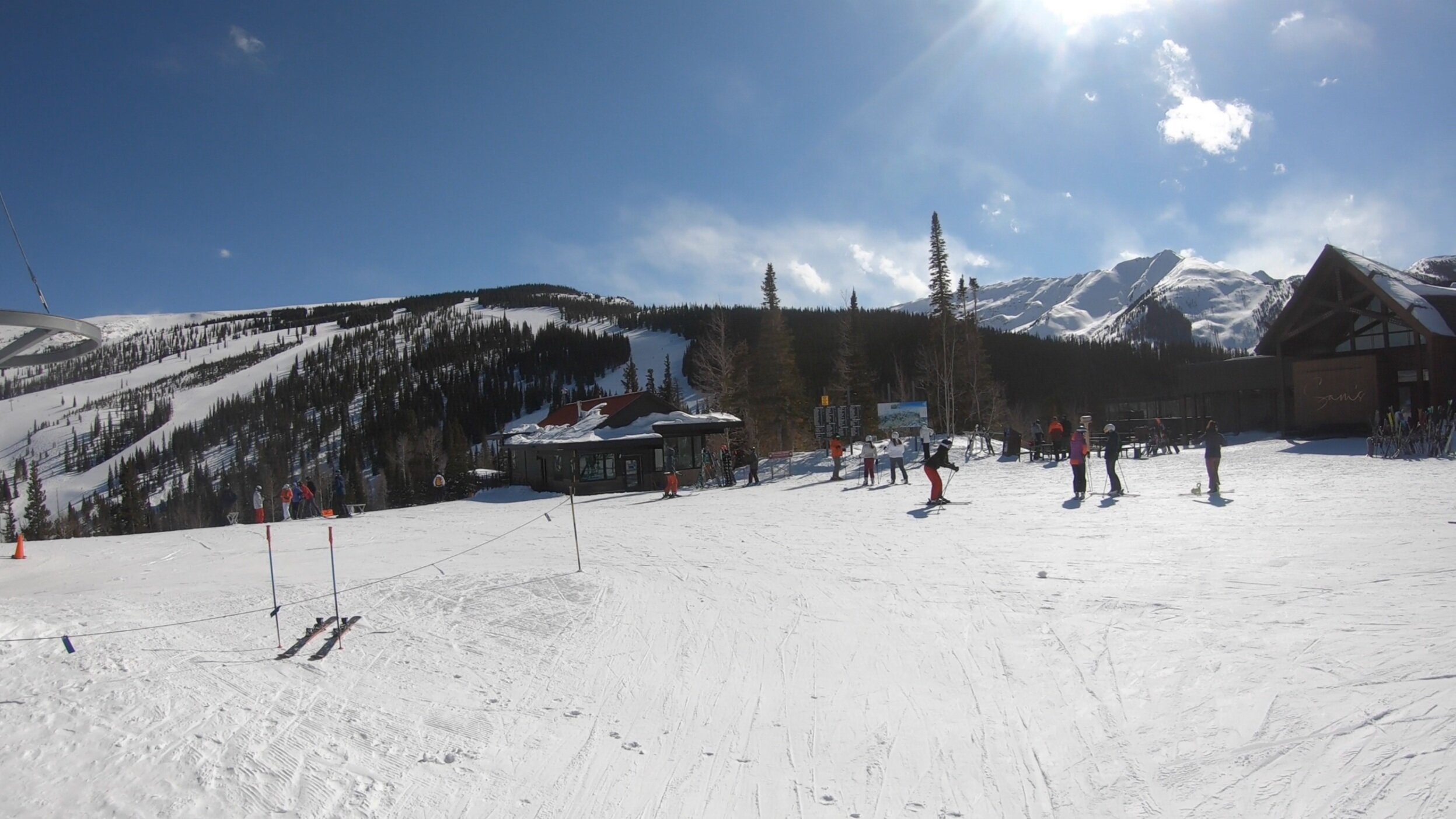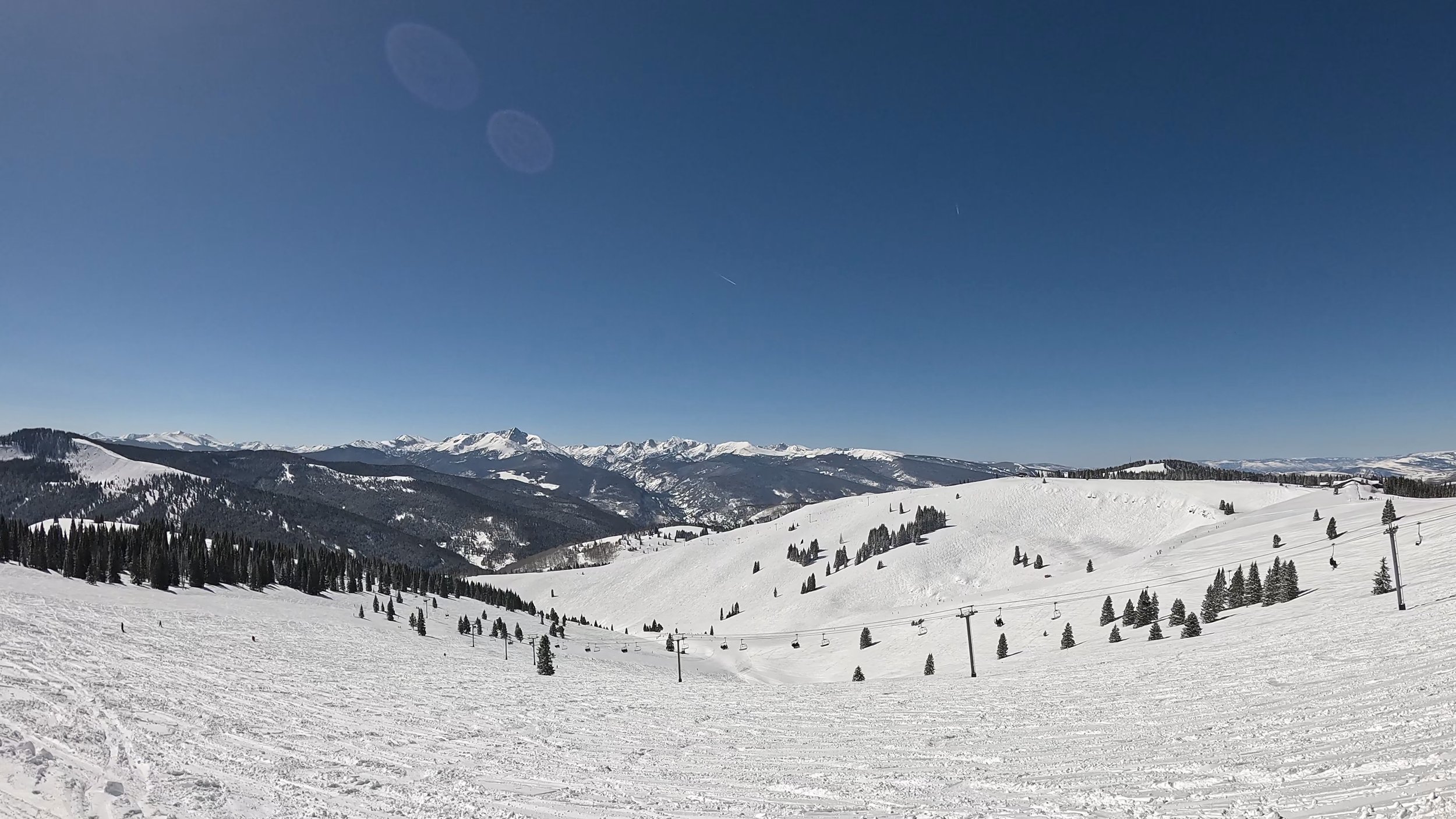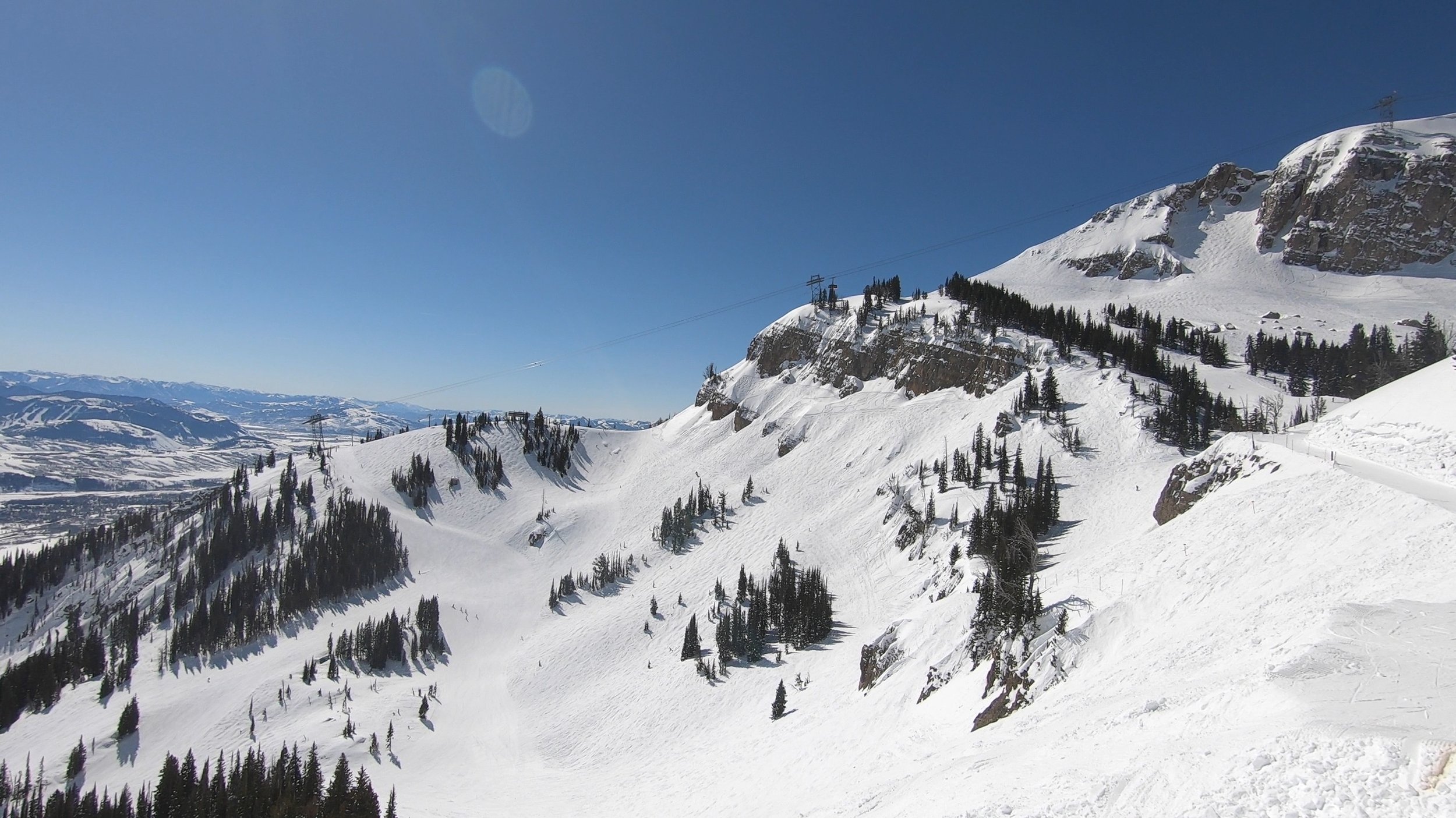USA Ski Resort Destinations Ranked: 2023-2024
When it comes to booking a ski trip in the United States, the number of available options can be almost dizzying. America is home to a wide range of mountains of various shapes and sizes, and even when it comes to the destinations that are large and exotic enough to justify flying to, there are dozens of viable options.
So as you figure out your next big ski trip in the States, which resorts are best? In this video, we’ll rank the destination ski resorts in the United States from worst to best, and we’ll also cover the pros and cons of each one.
What is a Destination Ski Resort?
To keep this list to the most relevant mountains, we’re only covering resorts that have:
on-site lodging
over 2,000 acres of skiable terrain
These circumstances generally correspond to ski areas that are feasible for a weeklong fly-to vacation.
Also, if two separate resorts are interconnected by a trail network and they have at least one shared ticket or pass product, we’re counting them as one single destination—this will become very relevant later on in the article. Let’s jump in.
#25: Northstar
First up on this list we have California’s Northstar, a ski resort that might look pretty good on paper but has a number of issues that really hurt its enjoyability for a true destination ski trip. On the plus side, Northstar has pretty impressive infrastructure; the vast majority of chairlifts are high speed, and it has some nice lodges on the resort front side. In addition, the resort is pretty easy to get around for its size, and when conditions are good, the resort has some pretty awesome tree terrain.
However, Northstar’s terrain is just way too bland to seriously compete with the other ski resorts on this list. Despite a 3,000-acre footprint, many runs feel quite similar to one another, leading to a much less interesting footprint than one might expect. Expert terrain is non-existent, as is high-alpine bowl terrain. In addition, both Northstar’s crowd flow and arrival experiences have become a lot worse in recent years. The resort gets packed on weekends and holidays, and while the lift network does have some useful redundancies, hours-long traffic backups can occur when driving to the mountain. The resort has a relatively convenient village and some very high-end accommodation options, but if you’re not staying on-site, the free parking options are located really far away from the lifts, with a long shuttle ride required to get to the base, making for a frustrating start to the day. Finally, like other Tahoe-area resorts, Northstar does not have the same snow quality and reliability as the U.S. resorts further inland.
Northstar is big and it has some solid tree terrain, but that’s about all it has going for it as a destination ski resort, and it’s much better viewed as a regional mountain for those who live in the Bay Area. Lift tickets are atrociously priced, but the resort is thankfully available for far less on the Epic Pass, provided you purchase before early December.
1-Day Ticket Range (Core Season):
Adult 18-69: $189-$294
Child 6-12: $132-$206
Teen 13-17: $170-$265
Senior 70+: $170-$265
Child 0-4: Free
Pass Options:
#24: Crystal Mountain
Next up, we have the only ski resort in Washington on this list: Crystal Mountain. Crystal is home to some rather impressive snow totals for the United States, seeing over 400 inches in a typical season. The resort is also a joy for experts, with steep, gnarly pitches making up considerable portions of the resort and involving obstacles such as rocks, cliffs, and trees—and even some mandatory straightlines. And when it’s clear out, Crystal has some of the best views of any North American ski area, with striking views of Mt. Rainier, which is Washington State’s tallest mountain, from the top of the resort.
But despite its charms, Crystal has a number of limitations that make it less-than-ideal for a true destination vacation. First off, while the resort does have some on-site lodging, it’s extremely limited and books up quickly. There are some lodging options within driving distance of the resort, but parking reservations are required on weekends and they can fill up quickly. The resort spreads across 2,300 skiable acres, but accessing this respectably-sized footprint can be tricky due to inefficient lift operations, which often result in long lines, exacerbated by the frequent Seattle crowds. Additionally, while Crystal receives plenty of snow, it tends to be heavier and wetter than the light, fluffy accumulation often found in the Rockies, and overcast skies are more the rule than the exception here.
For those looking to break away from the typical Rockies destinations and specifically hit some spicy expert terrain, Crystal might be a solid choice for your next ski trip. But the mountain lacks the crowd management, snow quality, and true destination resort feel of other resorts higher up on this list. Crystal’s lift tickets can get really expensive if you go during a peak time, but you can actually get some pretty decent rates on less popular dates. The resort is also a member of the Ikon Pass, returning to unlimited access on the full Ikon product after only offering seven days last year.
1-Day Ticket Range (Core Season):
Adult 23-64: $89-$199
Child 6-12: $42-$94
Teen 13-22: $81-$181
Senior 65+: $42-$94
Child 0-4: Free
Pass Options:
#23: Powder Mountain
Next up on this list we move to Utah’s Powder Mountain, which is probably the strangest destination mountain in North America by a number of measures. The resort offers an upside-down layout, significant restrictions on daily lift ticket sales, and an advertised 8,464-acre footprint, creating a stark contrast from nearly every other mountain on this list.
Powder Mountain’s low resort traffic results in some of the best snow preservation of any ski resort we’ve ever tried, and fresh snow can stay untracked for days. In addition, lift lines are essentially non-existent, even during peak times.
However, Powder Mountain’s quirks aren’t all positive. First off, the resort’s acreage claims do not hold up to scrutiny, with less than a third of the advertised footprint accessible via lift service to the public. In addition, Powder Mountain lacks a coherent snowmaking system, and combined with a fairly low base elevation, early and late season operations can be hit or miss. And while lift lines are never an issue, Powder Mountain’s on-mountain infrastructure is somewhat behind the times, with slow lifts in certain areas and limited on-mountain facilities.
Finally, Powder Mountain has introduced some fairly controversial updates for this upcoming season. The resort is expanding its lift-served footprint and upgrading its ancient Paradise lift to a high-speed quad, but it’s also closing a few terrain zones to the public and reserving them exclusively for homeowners. Despite some improvements within other areas of the resort, this move to a semi-private model will not sit well with those who previously appreciated the down-to-earth vibe of this Utah resort.
Powder Mountain still has a lot of unique benefits, but its limited amenities, less-than-perfect reliability, and difficult-or-impossible access to much of its advertised footprint hurt it against much of the U.S. resort crowd. Additionally, Powder Mountain’s empty slopes come with a steep cost: 1-day adult lift tickets start at $156, and during peak times, good luck getting one for less than $200. The resort is no longer on any multi-resort pass products, so unfortunately, there’s no way to get around this exorbitant cost of entry.
1-Day Ticket Range (Core Season):
Adult 19-64: $109-$219
Child 5-12: $92-$202
Teen 13-22: $92-$202
Senior 65+: $92-$202
Child 0-4: Free
Pass Options:
None
#22: Kirkwood
Next up on this list we have Kirkwood, our first resort on the South Shore of Lake Tahoe. Kirkwood is a lot more “no-frills” than many of the other resorts on this list, with minimal buildup, an incredibly remote footprint, and striking surroundings. The resort also stands out with some of the best extreme terrain in the country, with chutes, cliffs, and couloirs that will make your blood curdle—and can seemingly appear out of nowhere at times. In addition, while snow consistency isn’t quite up to the same standard as some of the resorts in the Rockies, Kirkwood’s favorable elevation results in favorable snow quality for a West Coast ski resort.
But while it might be an expert’s sanctuary, Kirkwood has a couple of drawbacks that put it at a disadvantage versus the ritzier destinations higher up on this list. First off, Kirkwood isn’t the largest ski resort in the world, and its 2,000-foot vertical drop is closer to some regional mountains than most other true destinations. Kirkwood also suffers from an outdated lift fleet compared to most other resorts in the States, with several areas served by slow, fixed-grip chairlifts that involve quite lengthy ride times. And if you’re not an expert, Kirkwood might not have much for you to do—the resort’s beginner and intermediate terrain is limited, and some lifts don’t offer any easy ways down, so you’re basically restricted from large swaths of terrain unless you’re advanced or better.
Kirkwood is fantastic for experts who don’t need a fancy resort experience, but its short vertical drop and limited lower-level terrain mean it won’t be as well-rounded as many other U.S. ski destinations. At least lift ticket rates, while not cheap, are somewhat more reasonable than other similarly-sized mountains in the States, and the resort is also available at a significant discount on the Epic Pass if you buy before early December.
1-Day Ticket Range (Core Season):
Adult 19-64: $149-$211
Child 5-12: $104-$148
Teen 13-18: $134-$190
Senior 65+: $134-$190
Child 0-4: Free
Pass Options:
#21: Heavenly
For our next mountain, we don’t move far. Also on the South Shore of Lake Tahoe sits Heavenly, which, unlike Kirkwood, sits right over the edge of the lake itself. This circumstance makes for some absolutely phenomenal views, with trails that directly overlook the deep blue lake and feel almost as if you’re looking down into another season. Heavenly is one of the few ski resorts in North America you can ski or ride in between states—one half of the resort is in California, and the other half is in Nevada—and the town of South Lake Tahoe directly beneath the resort has plenty of activities after the slopes close.
But besides its one-of-a-kind lake views, Heavenly doesn’t really stand out all that much versus the rest of the U.S. destination crowd. The resort has some great intermediate and advanced terrain, but beginner options are extremely limited, and while there is actually a bit of gnarly expert terrain, it’s concentrated in one specific area of the resort, and the hardest lines take hiking to get out of. And while the resort’s 2,700-acre skiable footprint offers quite a lot to explore, it is a huge pain to get around, with a generally confusing layout—especially when navigating between the California and Nevada sides—and several sections of flat terrain. Finally, like the other Tahoe-area resorts, Heavenly’s snow does not stand up to the resorts further inland in the U.S., with wetter, heavier accumulation and less reliable terrain openings, especially in lower mountain areas.
Heavenly is a stunning resort, but if you care about more than just views on your next destination ski trip, there are a lot better options out there. Lift ticket rates are absolutely insane, with 1-day adult rates now going for as high as $283 if you buy the day of, but if you want to save on access, you can buy an Epic Pass product through the beginning of December.
1-Day Ticket Range (Core Season):
Adult 19-64: $185-$283
Child 5-12: $130-$198
Teen 13-18: $167-$255
Senior 65+: $167-$255
Child 0-4: Free
Pass Options:
#20: Schweitzer
Next up we move to the panhandle of Idaho, where Schweitzer offers a lower-key alternative to many destinations around the country. Schweitzer’s under-the-radar profile pays off during peak times, with more reasonable lift lines than one might expect from a typical destination ski resort during major holiday periods. Schweitzer also stands out for its near-treeline glade terrain, with widely-spaced trees making up a sizable portion of the footprint and often retaining some really nice powder stashes when conditions allow.
But Schweitzer has a couple of things going against it that may not make it the best choice, especially if you don’t have to plan your vacation around peak holiday periods. The resort has some fantastic views when it’s clear out, but days like this are few and far between; thick fog is a common occurrence at the resort, and at times, it can be hard to even see a few feet in front of you. And while Schweitzer does have a decently-sized footprint, it’s not nearly as big or diverse terrain-wise as many competing resorts elsewhere in the States, with a convoluted backside lift setup making it tougher to take advantage of some of the terrain than it should be.
Schweitzer has the right chops to make it a solid choice for intermediate-to-advanced visitors looking to avoid the crowds during peak times, but it isn’t quite large, varied, or consistently clear enough to beat out the other resorts on this list. At least lift ticket prices aren’t terrible, with 1-day adult rates topping out at $135 if you buy at the window and going for modest discounts if bought in advance. The resort is also a member of the Ikon Pass, with unlimited access on the full pass and 5 days of access on the Ikon Base products.
1-Day Ticket Range (Core Season):
Adult 18-79: $110-$135
Child 7-17: $60-$75
Child 0-6: Free
NOTE: These are 2023-24 prices
Pass Options:
#19: Park City
Next up, we move to the United States’s biggest publicly-accessible ski resort: Utah’s Park City. But wait a second: how did the largest resort in the U.S. end up at #19 on this list? Well, it turns out there’s a lot to dig into here.
Let’s start with the positives. Park City’s sheer size means it has an almost unthinkable amount of terrain to explore, with slopes that will take weeks to fully cover, if not an entire season. Park City is also home to one of the best ski towns in the United States, with an extensive après scene accessible right off the slopes of the town bases. Combined with the resort’s location less than an hour from the Salt Lake City airport with no traffic, Park City is a fantastic option for those who value post-slopes activities and want the easiest travel experience possible for a true destination ski trip.
However, Park City’s raw footprint size should be viewed with somewhat of an asterisk. Rather than one singular, well-integrated resort, today’s Park City Mountain Resort is the combination of two formerly separate ski areas—Park City Mountain and Canyons. The two resort sides are only connected by a singular gondola, and getting between the best parts of both resorts involves a convoluted mix of lift rides and trail connections, making the Park City and Canyons sides function more like two separate mountains than one coherent ski area. In addition, the word is out about Park City, and crowds have become a serious problem during peak times. Combined with a convoluted, indirect lift network, guests will find themselves waiting in protracted lift lines on weekends and holidays. And finally, while Park City does have plenty of terrain, its high-alpine bowls and expert slopes are somewhat lacking compared to the best mountains on this list.
Park City is still a great option for the casual skier or rider who values a good, easily-accessible ski town, but in terms of the overall mountain experience, many other better options exist. Park City is also home to one of the U.S.’s worst value lift tickets, with 1-day rates going for as high as $328 if you buy at the window—and starting well over $200, even if you buy in advance. This is an absolutely crazy amount of money to pay for any day of skiing or riding within the bounds of a traditional ski resort. At least Park City is also available on the much more affordable Epic Pass suite of products, so if you plan on visiting this winter, be sure to pick one up before they’re off sale in early December.
1-Day Ticket Range (Core Season):
Adult 13-64: $259-$328
Child 5-12: $168-$213
Senior 65+: $194-$246
Child 0-4: Free
Pass Options:
#18: Brighton/Solitude
Next up on this list, we have the duo of Brighton and Solitude, which are located in Utah’s Big Cottonwood Canyon. Brighton and Solitude are technically two separate resorts that wouldn’t be big enough to qualify for our destination criteria on their own, but they’re linked by a trail network and available for joint access on the Ikon Pass. Given the increased popularity of a dual visit to these resorts using Ikon, we wanted to make sure to cover them in this segment.
Brighton and Solitude really stand out for their snow quality. The resorts receive exceptionally dry and light accumulation for the United States, and they receive quite a lot of it too, with powder days—especially at Brighton—being a common occurrence. In addition, the resorts have some notable strengths that complement each other well—Brighton is home to a solid terrain park and some really nice beginner and intermediate terrain, while Solitude has some great expert chutes.
However, even when viewed as one continuous resort, Brighton and Solitude lack the size and amenities to beat out the best ski destinations on this list. The resorts aren’t the tallest in the world; the majority of mountain areas do not have particularly lengthy vertical descents, and the small part of Solitude that does offer a decent vertical drop—Honeycomb Canyon—is a pain to lap over and over again. Speaking of laps, neither Brighton nor Solitude has the best designed lift network, and while the lifts themselves are generally modern, there are quite a few chokepoints where major lines can build up. Both resorts lag behind most of their competitors when it comes to stopping in for a break, too—while mid-mountain lodges do exist, they’re small and lower-capacity than demand entails during peak times.
In addition, if you don’t have an Ikon full or Base Pass, Brighton and Solitude do not have a shared lift ticket product that offers full access to both resorts. The day-ticket-like Ikon Session Pass also counts Brighton and Solitude as two separate resorts, so if you visit both in one day, you will be credited against skiing or riding two days, rather than one. This means that if you don’t have one of the requisite pass products, choosing to ski both Brighton and Solitude on your next ski trip can become a lot more expensive and complicated.
Brighton and Solitude are good choices if your main priority for a trip is the highest-quality snow and terrain for a range of ability levels, but for the true big-mountain destination experience, other options have them beat. One-day individual lift tickets for each of Brighton and Solitude can be had for somewhat reasonable rates if purchased in advance, but once again, these tickets do not offer access to both resorts, and you’ll need to have an Ikon full or Base Pass product if you want to hit both in the same day without using two tickets.
Brighton
1-Day Ticket Range (Core Season):
Adult 13-64: $86-$155
Child 5-12: $45-$70
Senior 65+: $58-$105
Child 0-4: Free
Pass Options:
Solitude
1-Day Ticket Range (Core Season):
Adult 13-64: $105-$189
Child 5-12: $66-$104
Senior 65+: $86-$137
Child 0-4: Free
Pass Options:
#17: Deer Valley
Utah is on the ball when it comes to this specific level of destination-quality resorts, and next up we move to Deer Valley, our first skier-only mountain on this list. In other words, sorry snowboarders—you’re not allowed to ride here.
Deer Valley stands out most for its hospitality. The resort is full of staff ready and willing to make the experience as seamless as possible for guests, with mountain guides at important trail junctions, staff ready to carry your gear at some of the base areas, and even complimentary ski storage during your lunch break or overnight. If you ever want to stop in for a break, that’s typically not a problem—the vast majority of mountain areas are within easy reach of the nearest lodge or restaurant. Deer Valley also offers impeccable grooming operations for those who love carving corduroy, and their cap on lift ticket sales means that despite a somewhat convoluted lift network, lines are never too bad.
But while it’s certainly upscale, Deer Valley is almost artificial in how resort-like it is. Nearly the entire mountain is built up with real estate developments, making the whole experience feel heavily commercialized and not isolated at all. In addition, while Deer Valley does have a small amount of high-alpine bowl and seriously technical expert terrain, the resort does not specialize in these types of slopes, and other mountains will better serve those looking for a true “wow factor” in their next destination skiing experience.
It is worth noting that Deer Valley is embarking on a massive expansion project over the next five years, nearly tripling the amount of terrain it has and turning it into the third-biggest ski resort in the United States by skiable acreage. While we won’t know until the expansion is finished, we expect to see more of the same real-estate-developed and groomer-heavy terrain that the resort specializes in now—so if you like the sound of Deer Valley today, you’ll probably like it even more over the next few years.
Deer Valley’s biggest drawback might be its lift ticket price. One-day adult tickets are just as expensive as that of neighboring Park City, starting at well over $200 on off-peak weekdays and even cresting the $300 mark on peak dates when taxes are included. Deer Valley is included on the Ikon Pass, but only the full and Base Plus Pass versions, meaning that no matter what, accessing this mountain will involve quite the steep down payment.
1-Day Ticket Range (Core Season):
Adult 13-64: $239-$299
Child 5-12: $148-$192
Senior 65+: $179-$232
Child 0-4: $50
Pass Options:
#16: Whitefish
Next up, we move to what’s maybe the most under-the-radar mountain on this list: Northern Montana’s Whitefish resort. Whitefish’s remote location results in a much more local feel than the typical U.S. ski destination, and serious crowds are rare, even during peak times. The resort especially stands out for its glade terrain; the mountain offers a wide variety of tree types across its footprint, and thanks to the area’s unique climate conditions, the trees are often coated in a thick sheet of crystallized snow that makes for an otherworldly feel. Whitefish also sits a short ways away from a great mountain town, and unlike the majority of other resorts on this list, night skiing is available on a portion of the footprint.
However, like other ski resorts in the Northwest part of the United States, Whitefish has serious fog issues throughout the winter season. While the thick clouds help a lot with snow preservation on the generally-south-facing footprint, they also make visibility difficult—which is a huge shame, because the resort is within spitting distance of the absolutely stunning Glacier National Park, making for fantastic views on clear days. In addition, Whitefish’s 2,350-foot vertical drop just isn’t that impressive compared to most destination ski resorts in the States, and the vast majority of competitors offer a lot longer runs. And finally, Whitefish’s remote location makes it tough to fly to, with limited or no direct flights from many largely-populated metro areas around the country.
Whitefish has a few problems, and it isn’t the biggest resort out there. But while it isn’t perfect, it really stands out in one particular category—and that’s value. While it’s not on any of the major multi-resort pass products, Whitefish is one of the rare U.S. ski areas where lift tickets are still relatively reasonable for what you get, with 1-day lift tickets going for under $100, even if you buy at the window. This isn’t something you can say about any other ski resort on this list.
1-Day Ticket Range (Core Season):
Adult 19-64: $99-$110
Child 7-12: $48-$55
Senior 65-69: $85-$94
Senior 70+: $36-$40
Teen 13-18: $85-$94
Child 0-6: Free
Pass Options:
None
#15: Steamboat
Next up on this list, we get to our first resort in Colorado, Steamboat. Thanks to its northern location far away from Interstate 70, Steamboat offers a very distinct experience from the other resorts in the state. The mountain especially stands out for its glade terrain, with a wide variety of skiable tree areas spanning various widths, species types, and difficulties. In addition, if you’ve visited the resort in years’ past, Steamboat has recently made some massive improvements to the resort experience, with much-improved crowd flow out of the base area and an awesome expert-oriented terrain expansion.
But Steamboat still falls short in a few key areas. First off, the resort is not where you want to be if you’re looking for high-alpine bowls. The bowl sections that do exist are short and mellow out quickly. In addition, Steamboat lacks the same “wow” factor that makes so many other Rocky Mountain ski resorts such desired destination spots, with a much mellower and less distinctive resort summit than you’d get at the ski areas higher up on this list. Finally, Steamboat is still somewhat confusing to get around, and grooming operations can be hit or miss.
Steamboat offers fantastic glades, and it’s also next to the awesome ski town of Steamboat Springs. But other resorts higher up on this list just offer more unique experiences. Steamboat’s biggest issue is probably its lift ticket price—1-day adult rates top out at an absolutely crazy $299, and off-peak tickets aren’t much better. If you want to visit Steamboat, you should pick up an Ikon Pass product before they’re off sale in December.
1-Day Ticket Range (Core Season):
Adult 13-64: $215-$299
Child 5-12: $184-$255
Senior 65+: $208-$289
Child 0-4: $10
Pass Options:
#14: Sun Valley
Next up on this list we move to another mountain in the great state of Idaho, Sun Valley. Much like Deer Valley we covered earlier, Sun Valley is all about the upscale experience. The resort is home to what might be the nicest lodges of any ski area on this list, and the mountain has views to boot, with some absolutely stunning bowl areas and views of snow-capped mountain ranges that feel like they go on endlessly. Sun Valley also sees fewer crowds than most other U.S. destinations thanks to its remote location, and the neighboring town of Ketchum offers an authentic ski town vibe and plenty to do after the slopes close.
But Sun Valley suffers from one major disadvantage that takes it out of the running for a top spot on this list. The resort’s biggest weakness is its snow—annual accumulation averages less than 200 inches a season, and while the snow quality isn’t bad, the limited quantity makes for inconsistent conditions, especially on the resort’s fickly-open expert terrain, and bare spots in certain areas surrounding the slopes. Sun Valley is also tougher to get to than most competitors elsewhere in the States; if you don’t want to fly directly to Sun Valley itself, it’s a nearly-three-hour drive from Boise. Finally, while the town of Ketchum offers fantastic vibes, there is no true ski-in/ski-out lodging at Sun Valley’s main Bald Mountain area for those who value that.
Sun Valley has the upscale nature and beautiful surroundings to flex its destination chops, but it’s just too unreliable and remote to make for a compelling vacation for most people. Lift ticket prices are a huge downside as well—for adults, 1-day rates go for well over $200 during peak times, and you can’t get them for much cheaper even if you buy well in advance. Sun Valley is a member of the Ikon and Mountain Collective Pass suites, but at least for Ikon, you only get Sun Valley access on the Base Plus and full passes, so these options aren’t all that cheap either.
1-Day Ticket Range (Core Season):
Adult 13-64: $188-$255
Child 5-12: $104-$129
Senior 65+: $131-$162
Child 0-4: Free
Pass Options:
#13: Palisades Tahoe
Moving back to Lake Tahoe, next up on this list is the region’s largest ski area: Palisades Tahoe. If you’re an expert skier or rider, Palisades has the goods, with some of the most extreme skiable cliffs, chutes, and couloirs anywhere in the United States. The resort also boasts a stunning footprint, with unique terrain features throughout the resort and awesome Lake Tahoe views, and a large one as well, with over 4,000 skiable acres across all of its terrain zones. Finally, Palisades Tahoe offers a great spring skiing operation, and in some years, certain parts of the resort can stay open as late as July.
But Palisades Tahoe suffers from a lot of the same problems as other Tahoe-area ski resorts. While the resort sees very competitive snow totals on average, accumulation patterns are typically feast or famine, meaning that while there can be massive snow dumps, the resort can also go weeks without significant accumulation. In addition, snow tends to be wetter and heavier than that of the destination resorts further inland in the States, and due in part to a moderate climate, freeze-thaw cycles regularly occur. Palisades Tahoe’s 4,000 skiable acres are also a bit misleading, as they are not accessible on a continuously skiable footprint; instead, the full resort is actually composed of two formerly separate resorts—Squaw Valley and Alpine Meadows—that are only connected by a very lengthy gondola ride. Finally, Palisades Tahoe is a known entity, both nationally and for those in the regional cities nearby, and both crowds and parking are a mess on weekends and holidays.
Palisades Tahoe is an expert’s paradise on a good day, but the resort is just too unreliable and crowded to make for a practical destination vacation for a lot of people. Like many of the other resorts on this list, 1-day lift tickets go for absolutely insane prices, especially during peak times. If you want to visit Palisades this season, you should be sure to pick up an Ikon Pass or 4-Day Lift Pack product before they’re off sale at the end of the calendar year.
1-Day Ticket Range (Core Season):
Adult 18-69: $188-$289
Child 5-12: $132-$202
Senior 70-79: $169-$260
Teen 13-17: $169-$260
Child 0-4, Senior 80+: Free
Pass Options:
#12: Mammoth
Next up, we move to our final California ski resort on this list: Mammoth. Mammoth is a lot further south than the other major ski resorts in the state, as well as the majority of other destinations around the whole country, but despite its seemingly-unfavorable latitude, it has a few things going for it that allow it to edge many of them out on the destination stage. First off, Mammoth sits at a significantly higher elevation than every other Sierra Nevada resort, allowing for more consistent temperatures and better-quality snow that’s more on par with resorts further inland. Mammoth also offers a sizable 3,000-acre skiable area, and the resort is home to some of the best expert terrain in the country thanks to its rugged footprint. Mammoth also excels in its terrain park setup, which is one of the best in the country, as well as the spring skiing department, with closing dates that, in the best seasons, can extend as late as August.
Mammoth does have a few issues though. While the resort offers competitive snow totals on average, dry spells between storms can occur, leading to inconsistent conditions. On top of that, Mammoth’s unique location draws a ton of crowds from Southern California, leading to long lines during peak times, and the resort’s trail signage can be incredibly confusing, making it difficult to navigate the large footprint. And for those who don’t live within driving distance, Mammoth might be tougher to get to than some of the other resorts on this list; the local nearby airport doesn’t have many direct flights, and the international airports in Reno, San Francisco, and Los Angeles are several hours away.
Mammoth may not be perfect, but it’s a surprisingly well-rounded resort for where it sits in the U.S. geographically. As with a lot of the other resorts we’ve covered so far, the biggest downside for a lot of people might be price. One day lift tickets go for over $200 during peak times, and while the Ikon Pass and Quad Pack products are an option through early December, accommodation costs at Mammoth can be quite pricey too.
1-Day Ticket Range (Core Season):
Adult 18-69: $159-$259
Child 5-12: $72-$94
Senior 65-79: $130-$171
Teen 13-22: $130-$171
Child 0-4, Senior 80+: Free
Pass Options:
#11: Winter Park
Next up on this list, we have a bunch of resorts in the Rockies, and we start with Colorado’s Winter Park. Winter Park is an awesome mountain if you’re looking for a destination that caters to a range of abilities; the resort has terrain that suits beginners and experts alike, with dedicated easier terrain areas, unique intermediate bowls, and uniquely long and trying mogul areas in the Mary Jane zone. Winter Park also offers fantastic trees throughout its footprint, and it’s the one ski resort in Colorado that’s actually served by train, with Amtrak service daily on weekends during the core winter season.
But Winter Park doesn’t stand out quite as much as some of its competitors in certain regards. The resort is somewhat lacking in terms of available lift-accessed bowl terrain, especially for advanced and expert bowls, which are either hike-to only or served by a low-frequency sled ride. In addition, Winter Park can get really crowded, especially on the Mary Jane side where the bowls and best mogul runs are, so it’s not a great choice for a busy weekend or holiday.
Winter Park is a great family destination—and it’s awesome for those who love trees and moguls too—but other options might be better for those looking for truly extreme or iconic terrain. Winter Park lift tickets can get incredibly expensive if you wait to buy at the window, so those hoping to visit here should pick up an Ikon Pass or Flex Ticket product before they’re off sale in December.
1-Day Ticket Range (Core Season):
Adult 13+: $200-$265
Child 5-12: $124-$165
Child 0-4: Free
Pass Options:
#10: Keystone
Next up, we move to Summit County’s Keystone, which has seen quite a transformation over the past few seasons. This Colorado mountain has historically been known for its below-treeline cruising trails and unique stacked-mountain layout, but this past season, the resort addressed what was arguably its biggest shortcoming, adding lift-served above-treeline bowl terrain for the first time ever. The resort also stands out for its mix of groomed, mogul, and tree terrain, and while operations have been significantly curtailed in recent years, it’s still the only Interstate 70 corridor ski resort to offer twilight skiing on weekends and holidays.
But while Keystone’s lift-served footprint is now a lot bigger than it used to be, the resort is still a lot smaller than its competitors when it comes to lift-accessed slopes, with nearly 40% of its terrain requiring hiking to reach, get out of, or both. In addition, Keystone sits in somewhat of a snow shadow compared to a lot of nearby competitors, meaning that storm totals tend to be a few inches lower than one might find elsewhere. And if you’re looking for the biggest and baddest expert terrain, Keystone is not for you—the resort does feature some long, demanding mogul runs, but true expert pitches and features such as chutes are essentially nonexistent.
Keystone has become a much more well-rounded destination in recent years, but other resorts still offer more complete packages, especially for experts. Just as with many of the other resorts on this list, Keystone’s 1-day lift tickets are absurdly priced, so if you’re watching this video before early December, be sure to pick up an Epic Pass product while they’re still on sale.
1-Day Ticket Range (Core Season):
Adult 13-64: $179-$292
Child 5-12: $116-$190
Senior 65+: $170-$277
Child 0-4: Free
Pass Options:
#9: Copper
Sticking with Colorado, the next mountain on this list is Copper, which sits just off of Interstate 70 a few hours west of Denver. If you have a group of varying ability levels, Copper might be the best ski resort you can go to, with excellent terrain ranging from beginner to expert, all spread out across naturally insulated resort zones for visitors of different abilities. If you can think of a terrain type, Copper has it covered, with a wide range of below-treeline groomers, bump runs, glades, and high-alpine bowls. Speaking of bowls, Copper has one of the most extensive advanced and expert-level above-treeline terrain setups in the country, with the Back Bowls and Tucker Mountain zone providing days worth of awesome bowls to explore.
But Copper is a bit more of a locally-oriented ski area than all of the destinations higher up on this list, and while this isn’t necessarily a bad thing, there are a few drawbacks worth mentioning. Most notably, outside of the bases and some popular frontside terrain zones, Copper’s lifts are slow—and some of the lifts that primarily serve bowl or expert terrain can be difficult to load at times. Copper also isn’t always the most convenient place to stop in for a break on a cold day, with no indoor lodges on its back side or the furthest-removed Tucker Mountain area. Finally, if you’re looking for an extensive ski town experience, Copper’s base village doesn’t have much going on after the slopes close, so other resorts may be better if après is a priority.
Copper isn’t perfect, but for the right demographic, it’s a great choice. Regular lift tickets do get expensive, but if you plan in advance, you can get access for a much better deal using an Ikon Pass product—or better yet, buying a Copper Four Pack.
1-Day Ticket Range (Core Season):
Adult 13+: $99-$264
Child 5-12: $99-$134
Child 0-4: Free
Pass Options:
#8: Breckenridge
Sticking to Colorado for one more mountain before we finally shift to a different state, Breckenridge might be one of the best known ski destinations in the entire United States. The resort’s massive footprint, exceptional terrain diversity, and excellent ski town make for a phenomenal package on paper. Breckenridge also stands out for its high-alpine chops; an extensive network of high-intermediate-to-expert bowl terrain spans a considerable portion of the resort’s footprint, and included within these bowls is the Imperial Express, which summits out at the highest lift-served point of any chairlift in North America.
But at this point, Breckenridge might be too popular for its own good. While the resort boasts an extensive lift network, crowds are a serious problem during peak times, and guests should expect long waits, especially at the bases, when the resort is busy. Breckenridge is also an incredibly wide resort, and getting across its five peaks throughout the day can be cumbersome and confusing; if some in your group easily get lost, Breckenridge is not the mountain to visit. And while Breckenridge’s high-alpine bowls might be the most unique part about its footprint, the substantial wind exposure up there means that wind holds are common, and the resort might go days without opening that type of terrain.
Breckenridge definitely has the big mountain aesthetic to impress the typical destination-goer, but its logistical issues might drive you a bit crazy. As with many of the other resorts we’ve covered, lift ticket rates have reached ridiculous rates in recent years, so be sure to pick up an Epic Pass product by early December if you want a remotely reasonable deal on access.
1-Day Ticket Range (Core Season):
Adult 13-64: $225-$299
Child 5-12: $146-$194
Senior 65+: $215-$289
Child 0-4: Free
Pass Options:
#7: Big Sky
Next up, we move up to the great state of Montana to cover the one and only Big Sky. Big Sky offers a really unique experience for a U.S. destination resort, with a massive 5,850-acre footprint—the second-highest on this list—genuinely fantastic terrain for skiers and riders of all ability levels, and a stunning facade thanks to the iconic Lone Peak that towers above the slopes. Speaking of Lone Peak, the top of the resort offers some of the most intense expert terrain one can find anywhere, with runs such as the Headwaters, North Summit Snowfields, Gullies, and Big Couloir offering extraordinarily steep, extremely-high-consequence descents down iconic rock-riddled chutes. If you’re traveling with a large group and have a liberal budget, Big Sky also offers a wide variety of upscale ski-in/ski-out condos that can sleep tons of people.
But while Big Sky might look like the perfect U.S. ski destination on paper, it has a couple of flaws that keep it just out of the top tier of this list. Most notably, the resort is somewhat of a logistical mess; especially if you try to visit the more remote parts of the resort, there are slow or weirdly-placed lifts in certain areas. In addition, a few notable lift chokepoints can cause long lines during the busiest visitation periods. And perhaps the most frustrating part of visiting Big Sky is that if you visit using an Ikon Pass, Mountain Collective Pass, or lower-tier season pass product, Lone Peak Tram access is not included as standard, and must be purchased on a per-ride basis as an extra-cost add-on. Regular lift tickets do now include the Lone Peak Tram with no access restrictions, but given how expensive these can get, it’s disappointing that those looking for a decent value visit to Big Sky won’t get standard access to the only lift that serves the resort’s best views, full vertical drop, and truly extreme terrain (although certain other extremes are accessible by hiking up the Headwaters). It’s also worth noting that flights in and out of Bozeman, which is the closest major airport, can be limited from certain U.S. cities.
Big Sky is well worth a visit for those looking for a remote, big-mountain ski vacation with terrain for all abilities, but it has a few frustrating circumstances that may rub some people the wrong way. Lift tickets can actually be had for rates that aren’t totally ridiculous if you buy in advance, but 1-day adult rates top out at $275—so while you won’t get the standard tram access, it may still be a better deal to visit using an Ikon or Mountain Collective product.
1-Day Ticket Range (Core Season):
Adult 15-69: $157-$275
Child 5-12: $94-$175
Senior 70+: $126-$230
Child 0-4: Free
Pass Options:
NOTE: Pass options do not include Lone Peak Tram access; each ride costs an additional $10-$40.
#6: Beaver Creek
Next up, we move back to Colorado for the westernmost resort in the Interstate 70 Corridor, Beaver Creek. This high-end resort is known mostly for its hospitality, with exceptional customer service, high-speed lifts nearly everywhere, and fantastic, well-thought-out lodges spread across the resort.
But unlike some of the other resorts we’ve covered so far, such as Northstar and Deer Valley, Beaver Creek offers a pretty compelling terrain experience as well. The resort is home to some of the best endurance runs in the United States, with exceptionally long mogul trails in upper-mountain areas that will leave even the most in-shape skiers and riders tired. Beaver Creek offers a couple of other standout terrain experiences as well, including McCoy Park, which is home to some of the best and most diverse beginner and low-intermediate bowl terrain in Colorado, and the very technical Stone Creek Chutes, which include a couple of mandatory cliffs on the hardest lines. Beaver Creek also benefits from its location; as the furthest I-70 resort from the Denver airport, it sees fewer crowds than most of the other mountains on this list, and can be a great option for a peak holiday getaway when the other mountains are swarmed with tourists.
But while Beaver Creek is very impressive, it isn’t perfect, and its biggest drawbacks have to do with its terrain. Unlike nearly every other resort on this list, advanced and expert bowl terrain is completely nonexistent, meaning that experienced skiers and riders looking for bowls will want to look elsewhere. In addition, despite the beautiful, wide-open meadows of McCoy Park, Beaver Creek is somewhat lacking in its intermediate terrain, especially in upper-mountain areas. And while its location might keep crowds down, the three-hour drive from Denver—and that’s assuming no traffic—may be a bit too long for some folks’ taste.
Beaver Creek may not have everything that a large U.S. ski resort could offer, but for those who value a luxury-first resort experience, it’s hard to beat. Unfortunately, the high-end-vibes come with extremely high lift ticket prices, and 1-day adult rates now top out at an almost unbelievable $329. Beaver Creek is on the Epic Pass, so if you’re even remotely thinking about visiting next winter, be sure to secure one of these day or season pass products before they’re off sale.
1-Day Ticket Range (Core Season):
Adult 13-64: $249-$329
Child 5-12: $172-$227
Senior 65+: $239-$319
Child 0-4: Free
Pass Options:
#5: Telluride
Next up, we move to what’s arguably the best ski resort in southern Colorado, Telluride. Telluride is one of those mountains that just strikes you with how incredible it looks at a first glance—the jagged, red-rimmed peaks that make up the resort and its surroundings are like no other large ski resort in the country, and the town of Telluride itself is one of the most picturesque but also fun ski towns out there. Telluride offers a wide variety of terrain, with extensive options for intermediate-to-expert skiers and riders, and for those looking for a challenge, the resort especially stands out for its mid-mountain mogul runs and high-alpine chutes. In addition, thanks to its very remote location, the resort rarely sees crowds, even on peak weekends and holidays.
Telluride does have a few drawbacks, the biggest arguably being its access difficulty. While the resort’s notable remoteness keeps crowds at bay, it also means that traveling there by plane either requires flying to a local, or regional airport or driving over six hours from the Albuquerque or Denver International Airports. And even if you fly into the closest regularly-scheduled regional airport, which is Montrose, the resort is still an hour and a half away from there. In addition, Telluride doesn’t see quite the same snow totals as most of the other destinations on this list, so early-season trips can be quite hit-or-miss, and a good amount of the highest-elevation terrain takes significant hiking to reach, with the summit of Palmyra Peak—which also happens to be the highest point of any ski resort in the States—taking over two hours to reach from the top of the nearest lift.
Telluride may not be the best choice for those who value convenience or want to plan their ski trip before mid-February, but for an unforgettable ski vacation, it’s hard to beat. The biggest issue might be cost—Telluride’s one-day adult tickets go for about $200 a piece, and lodging in town tends to be very steep as well, especially if you don’t book well in advance. If you want to visit Telluride, the resort is on the Epic Pass—but the full version only—as well as the Epic Day Pass if you buy the highest tier and get at least four days of access.
1-Day Ticket Range (Core Season):
Adult 13+: $245-$260
Child 6-12: $125-$150
Child 0-5: Free
Pass Options:
#4: Snowmass
Next up, we move to the famously ritzy town of Aspen, where Snowmass takes the #4 spot on this list. Snowmass checks the majority of the usual boxes when it comes to an upscale ski trip, with high-speed lifts nearly everywhere, fancy lodges readily available to stop in all around the resort, and a walkable base village with luxurious hotels and designer stores.
But Snowmass ranks so highly on this list because even besides its luxury bonafides, it’s actually a really good ski resort. The mountain boasts over 3,300 acres of terrain, leaving more than enough terrain for guests of all abilities to explore, and it stands out for its wide variety of tree-defined trails, glades, and bowls, as well as its fantastic views from upper-mountain areas.
Snowmass isn’t perfect, although its drawbacks are relatively minor. The biggest issue might be the cost of entry—the Aspen/Snowmass complex is not cheap, and lodging within Snowmass Village—let alone anywhere in the Aspen area—is downright unaffordable for the average person. Snowmass is also located over four hours from the Denver airport, and flights from the closest regional airports, Aspen proper and Eagle, can be difficult logistically and expensive. And for those who want a serious challenge on their next ski trip, Snowmass’s most extreme terrain is somewhat cumbersome to find, so those who value the gnarliest chutes may have an easier time exploring them elsewhere.
Snowmass has very few real drawbacks, but it doesn’t stand out quite as much in a couple of ways to top this list. Like with its lodging, Snowmass’s lift tickets are incredibly expensive, starting at over $200, although it is worth noting they are usable at all four of the mountains in the Aspen/Snowmass complex. Snowmass is also a member of the Ikon Pass, albeit the over $1,000 full and Base Plus products only, as well as the Mountain Collective Pass, which provides two days of access across all four Aspen mountains.
1-Day Ticket Range (Core Season):
Adult 18-64: $244-$264
Child 7-17: $164-$189
Senior 65+: $164-$189
Child 0-6: Free
Pass Options:
#3: Vail
Next up, we move to the bronze medalist on this list: Vail, Colorado. The Vail brand has become somewhat infamous over the years as its namesake Vail Resorts has acquired dozens of ski areas around the country, but the mountain itself is the real deal. With over 5,300 skiable acres and more than 8,000 acres from boundary to boundary, Vail is gigantic, and it feels like you could spend weeks there without hitting every line. The resort also makes it speedy to get around, with high-speed chairlifts almost everywhere, and especially stands out for its most remote areas, with the uniquely expansive Back Bowls and supremely isolated Blue Sky Basin areas providing unforgettable aesthetics.
But while it’s big and upscale, a few circumstances keep Vail from topping this list. Perhaps the resort’s biggest drawback is its relative lack of truly extreme terrain; now, there are plenty of demanding mogul runs and steep bowls and trees, but those looking for death-defying chutes and couloirs that require mandatory straightlining will not find them here. In addition, Vail’s massive footprint can be very disorienting to get around, so if you get lost easily, the resort may not be for you.
Vail might be the ultimate ski resort for those looking for a massive footprint and a pampering experience, but a couple of other resorts in the States excel just a little bit more. Like with Beaver Creek, Vail’s lift ticket prices have gone up to almost unthinkable levels these days, so if you want to visit, be sure to get an Epic Pass product before they’re off sale in early December.
1-Day Ticket Range (Core Season):
Adult 13-64: $249-$329
Child 5-12: $172-$227
Senior 65+: $239-$319
Child 0-4: Free
Pass Options:
#2: Jackson Hole
Moving onto our runner up for the best U.S. ski destination, we have Wyoming’s Jackson Hole. This resort may sit in a quite remote location, but it does so many things well that it’s easy to see why so many people view it as a dream destination. Jackson Hole is probably the toughest overall large ski area in the country; not only does it have a series of truly extreme chutes and couloirs scattered throughout the footprint, most notably the famed Corbet’s Couloir directly under the tram, but it’s one of the ultimate endurance mountains as well, with a vertical drop that extends over 4,000 feet and allows for advanced-and-expert level pitches the entire way down. No other ski area on this list can offer terrain this tough for such an enduring length. Jackson Hole has also really improved its lift fleet in recent years, with the vast majority of terrain now served by high-speed lifts, and the Teton Range that makes up both the resort and its surroundings makes for an absolutely stunning backdrop. And for those who value nightlife, the nearby town of Jackson has a ton of bars and restaurants that are very much worth checking out.
Jackson Hole’s biggest drawback is probably the same as its biggest strength: its expert-oriented nature. The resort’s beginner experience is almost an afterthought, and while plenty of intermediate terrain exists, it’s a lot steeper than the blues one might find at most other resorts around the country. In addition, Jackson Hole primarily faces east, so even though the resort tends to see impressive snow totals each winter, if there happens to be a drought, the footprint is quite susceptible to freeze-thaw conditions. Finally, while the Jackson Hole airport is located pretty conveniently less than an hour away from the resort, flights in and out can be limited or expensive from certain U.S. cities.
Jackson Hole won’t be the best option for a ski vacation if you’re still learning, and the resort’s cost of entry is steep. Like every other top tier mountain we’ve covered so far, one-day adult lift tickets can cost over $200. The resort is on the Ikon Pass, but only the full and Base Plus versions, as well as the Mountain Collective. But for experienced skiers and riders, very little can match it. In fact, Jackson Hole arguably beats out every other ski destination in the U.S. as a comprehensive package—except one.
1-Day Ticket Range (Core Season):
Adult 19-64: $218-$269
Child 5-12: $131-$161
Senior 65+: $196-$242
Teen 13-18: $175-$215
Child 0-4: Free
Pass Options:
#1: Alta/Snowbird
That’s right—the interconnected Utah duo of Alta and Snowbird is our pick for the top ski destination in the United States. These Little Cottonwood Canyon resorts would probably top this list if viewed as separate entities, but when combined, they offer such an extensive array of advantages that they are hard to beat.
First off, Alta and Snowbird receive what’s arguably the best natural snow, both quality and quantity-wise, of any destination on this list. While the snow is supremely dry and light, it’s also frequent, and deep powder days are a common occurrence. The AltaBird footprint also features some of the most extreme terrain in the U.S., with plenty of expert-oriented features across both resorts and some especially gnarly chutes concentrated in Snowbird’s Cirque area, as well as some of the most beautiful scenery out there, with an isolated, one-with-nature feeling that can only be brought out by the quality of peaks and general lack of buildup that both resorts offer. Alta and Snowbird also combine to boast a quite competitively-sized footprint, with over 4,500 acres of skiable terrain between the both of them, and sit an almost unbelievable 45 minutes from the Salt Lake City airport when road conditions are good.
While it tops this list, the AltaBird complex isn’t perfect. Perhaps the biggest issue is Alta’s ban on snowboarding—if you want to ride on your next trip rather than ski, you’ll have to stick exclusively with Snowbird. In addition, neither resort has a particularly built-up town, so other mountains may be better if après is a priority—and if the roads get bad, traffic and temporary closures can become issues. Access can also be somewhat complicated; if you’re looking into multi-resort passes for next year, you’ll need either the full Ikon Pass, Ikon Base Plus Pass, or Mountain Collective to access both Alta and Snowbird—the Ikon Base Pass comes only with Snowbird access, and the day-ticket-like Session Pass doesn’t include either mountain. Finally, if you want to access both mountains using a traditional lift ticket, you might be better off visiting each resort separately, as AltaBird tickets are only available at the window and can get quite expensive. But if you’re looking for the ultimate Stateside ski destination, the AltaBird duo provides the snow, reliability, and sheer footprint size to fit the bill.
Alta
1-Day Ticket Range (Core Season):
Adult 13-79: $169-$199
Child 0-12: $95-$105
Pass Options:
Snowbird
1-Day Ticket Range (Core Season):
Adult 13-64: $156-$216
Child 7-12: $94-$130
Senior 65+: $133-$186
Child 0-4: Free
Pass Options:
Final Thoughts
So that’s our comprehensive ranking of the major ski resort destinations in the United States! Here’s a full breakdown of the overall mountain scores for each resort, along with their valuations in each category.
While there are a ton of options out there, they’re not all created equal, and some stand out quite a bit more than others. But the good news is, the top 10-15 destinations are so well-rounded that you’re unlikely to have a bad time at any of them, and the selection of which one you choose probably just comes down to personal preference.
How’d we do? Would you change the order? We’d love to hear from you, so if you have any thoughts, hit us with a comment below!
If you want to see our ranking of Tahoe resorts, you can watch that here
If you want to explore the mountains with Peak Rankings this winter, check out our Peak House trips, which will visit many of the mountains on this list.


